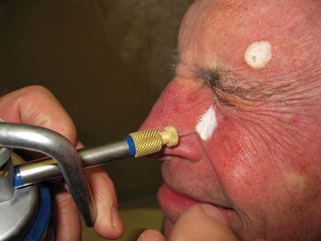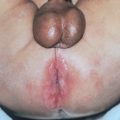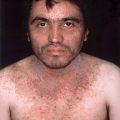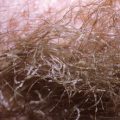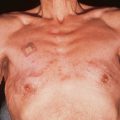Chapter 52 Cryosurgery
Gage AA: History of cryosurgery, Semin Surg Oncol 14:99–109, 1998.
Gage AA, Baust J: Mechanisms of tissue injury in cryosurgery, Cryobiology 37:171–186, 1998.
Table 52-1. Cryogens Used in Cryosurgery
| CRYOGEN | BOILING POINT (°C) |
|---|---|
| Liquid nitrogen | −195.8 |
| Nitrous oxide, liquid | −89.5 |
| Carbon dioxide, solid | −8.5 |
| Chlorodifluoromethane (Freon 22) | −40.8 |
| Dichlorofluoromethane (Freon 12) | −27.8 |
Table 52-2. Benign Lesions Treatable by Cryosurgery
Table 52-3. Malignant Lesions Requiring Monitoring During Cryosurgery
Andrews MD: Cryosurgery for common skin conditions, Am Fam Physician 69:2365–2372, 2004.
The spray technique uses modified thermoses that allow the LN2 to spray out of a nozzle (see Fig. 52-1). The degree of freezing is changed by the nozzle size, the pressure in the thermos, the distance to the lesion, and the length of freeze. This apparatus can be used for several hours, and contamination is not an issue. It also can treat very large lesions. A modification of this technique is to use neoprene cones to confine the LN2, causing a more concentrated freeze.
Jester DM: Office procedures: cryotherapy of dermal abnormalities, Prim Care 24:269–280, 1997.
Graham GF: Cryosurgery in the management of cutaneous malignancies, Clin Dermatol 19:321–327, 2001.

